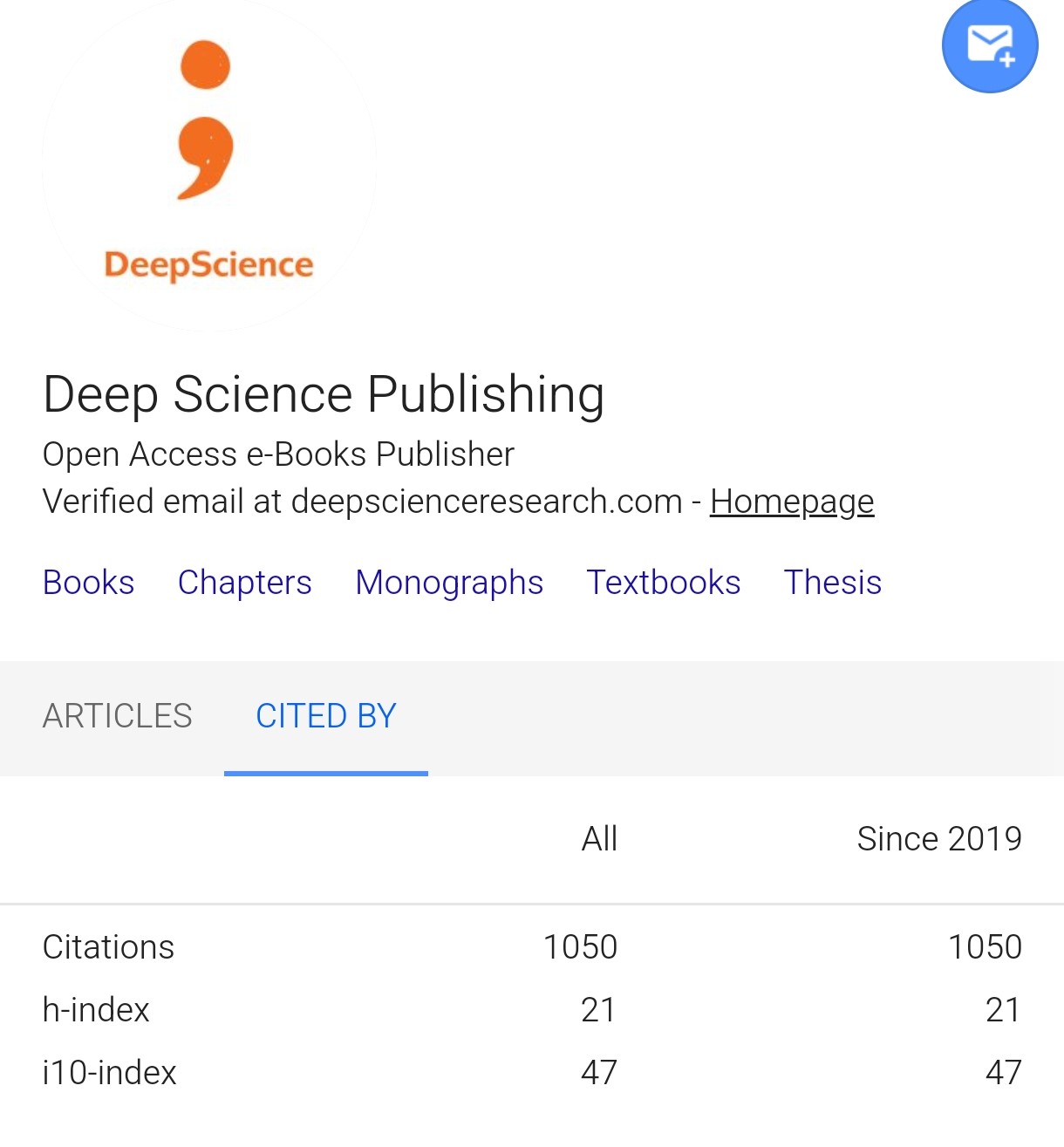Role of Surfactants in Drug Delivery, Pesticides, Antimicrobial Activity and Bioremediation
Keywords:
Surfactants, Surface-Active Agents, Amphiphilic Molecules, Critical Micelle Concentration (CMC), Drug Delivery, Personal Care Formulations, Agricultural SurfactantsSynopsis
This book offers a comprehensive exploration of the application of surfactants and advances research work in industrials and society. It begins with a detailed overview of application of surfactants disucc in Chapters 1-12.
Chapter 1 we discuss the general introduction of Surface-Active Agent, CMC, and it can lower interfacial and surface tension at these intersections to allow solids, gases, and liquids to mix or disperse easily, like dispersions in water or other solutions.
Chapter 2 discuss the classification of surfactants in four main groups: cationic, nonionic, zwitterionic, and anionic surfactants. Every variety has unique physicochemical characteristics and uses. This study provides a thorough grasp of the importance of these surfactants in a range of sectors by examining their structural traits, functioning, and varied uses.
In chapter 3 we discuss the different properties, interfacial parameters, and thermodynamic parameters of different surfactant systems.
This chapter 4 we highlight the vital function that surfactants play in the delivery of drugs, emphasizing their special physicochemical characteristics that help with important pharmaceutical issues such as low drug solubility, stability, and bioavailability. As amphiphilic molecules, surfactants make it possible to create a variety of delivery systems that encapsulate hydrophobic medications and improve their therapeutic potential.
In this chapter 5 explain the Application of Surfactant in Personal Care Products Formulation, As a responsive ecosystem that interacts with the environment to promote general health, the human skin is essential to the immune system. Because of its capacity to lower surface tension, emulsify oils, wash, and produce foam, surfactants are frequently employed in cosmetic compositions. They are essential components of many different kinds of products, including face cleansers, body washes, shampoos, and lotions. Cosmetics and customised care items that contain surfactants can help protect and nourish the skin.
Chapter 6 study the Host-guest chemistry involving macrocyclic hosts is one of the most promising research areas in chemistry, materials science, and biochemistry. This chapter briefly describes the physicochemical properties, preparation method, and mechanism of host-guest complexes. In addition, we also highlight the characterization methods of synthesized host-guest complexes and their various applications, especially in amphiphilic molecules like surfactants, ionic liquids, and surface active ionic liquids.
Chapter 7 discuss the Amphiphilic compounds known as surfactants reduce surface tension and create micelles in solutions. Micellar systems are essential in many industries, such as food, detergents, cosmetics, medicines, and environmental applications. The categorisation, creation, and uses of micellar systems are examined in this work, with an emphasis on how they contribute to improved chemical reactions, emulsification, and solubilisation. Future directions in surfactant research are also covered, as well as difficulties including toxicity and environmental issues. The surfactant is a crucial component of emulsifying agent, foaming agent, cleaning agent, wetting agent, dispersing agent, and anti-foaming agents and is used in a wide range of goods. Surfactant molecules have a drive to assemble above the critical micelle concentration (CMC) to create micelle-like structures.
Chapter 8 discuss the surfactants are crucial to modern farming practices because they increase the efficacy and sustainability of pesticide treatments. Additionally, biosurfactants have antibacterial properties that make them promising as biopesticides against pests, fungi, and diseases while enhancing plant resistance. Research highlights their contribution to sustainable agriculture, including enhancing trace element bioavailability and maintaining soil moisture levels for optimal crop growth. To improve soil texture, improve nutrient uptake, and reduce environmental toxicity, these substances are increasingly being used in soil amendments, pesticide formulations, and herbicides
This chapter 9 we study the solubilization of hydrophobic active ingredients allows for the creation of more effective formulations, especially for pesticides with low water solubility. Surfactants improve the absorption of active ingredients into plant tissues by disrupting cuticular barriers, thereby enhancing systemic action. Recent advancements in surfactant technology include the development of biodegradable biosurfactants and polymeric surfactants, which aim to mitigate environmental persistence and toxicity issues, thereby providing sustainable alternatives to traditional surfactants. Responsive surfactants, engineered to activate under defined environmental conditions, offer targeted control in agricultural applications. The incorporation of surfactants in pesticide formulations leads to less amount requirement which contributes to decreased environmental contamination and expanded pest control effectiveness
This chapter 10 we explores the mechanisms by which various classes of surfactants, including cationic, anionic, nonionic, and zwitterionic types, exhibit antimicrobial effects against bacteria, fungi, and viruses. Cationic surfactants, such as quaternary ammonium compounds, have demonstrated potent bactericidal activity, primarily by targeting the negatively charged microbial membranes. Nonionic and zwitterionic surfactants, on the other hand, show promising synergistic effects when combined with antibiotics, enhancing their efficacy.
This chapter 11 we explore the solubility and mobility of hydrophobic pollutants, surfactants aid in their removal from the soil. The success of surfactant-based remediation methods, however, depends on several factors, such as the nature of the contaminant, soil characteristics, and the concentration and type of surfactant used. While surfactant-enhanced soil remediation offers a promising and sustainable solution for addressing soil contamination, the ideal conditions for their use vary depending on specific site conditions and the pollutants involved. Additional research is needed to refine and optimize surfactant use in soil remediation. This chapter focuses on various types of soil pollutants worldwide and explores how surfactants can be used to remove them.
In chapter 12 we discuss the application of Surfactant in Bioremediation Various pollutants such as heavy metals, total petroleum hydrocarbons (TPHs), polynuclear aromatic hydrocarbons (PAHs), nonaqueous phase liquids (NAPL) and hydrophobic organic compounds (HOCs) toxicity has emerged as a major ecological issue that poses a major risk to public health and impacts ecosystems through bioaccumulation. Thus, areas contaminated by these pollutants have been decontaminated and restored using a variety of traditional techniques. However, because to their high energy requirements, post-waste disposal issues, secondary pollutant formation and high operating costs, these traditional methods are not environmentally safe for pollutants treatment.
References
Y. Zhu, M. L. Free, and G. Yi, "Electrochemical Measurement, Modeling, and Prediction of Corrosion Inhibition Efficiency of Ternary Mixtures of Homologous Surfactants in Salt Solution", Corros. Sci. 98, 417 (2015).
S. Y. Shiao, A. Patist, M. L. Free, V. Chhabra, P. D. T. Huibers, A. Gregory, S. Patel, and D. O. Shah, "The Importance of Sub-Angstrom Distances in Mixed Surfactant Systems for Technological Processes", Colloids Surf. A 128, 197 (1997).
M. L. Free, "A New Corrosion Inhibition Model for Surfactants that More Closely Accounts for Actual Adsorption than Traditional Models that Assume Physical Coverage is Proportional to Inhibition", Corros. Sci. 46, 3101 (2004).
D. Y. Ryu and M. L. Free, "Use of Electrochemical Noise Measurements for Determining the Rate of Corrosion and the Surfactant Aggregate Transition Concentration at the Mild Steel Liquid Interface", Adsorp. Sci. Technol. 22, 155 (2004).
Y. Zhu, M. L. Free, and G. Yi, "Experimental Investigation and Modeling of the Performance of Pure and Mixed Surfactant Inhibitors: Aggregation, Adsorption, and Corrosion Inhibition on Steel Pipe in Aqueous Phase", J. Electrochem. Soc. 162, C582 (2015).
M. Migahed, M. Hegazy, and A. Al-Sabagh, "Synergistic Inhibition Effect Between Cu21 and Cationic Gemini Surfactant on the Corrosion of Downhole Tubing Steel During Secondary Oil Recovery of Old Wells", Corros. Sci. 61, 10 (2012).
M. L. Free, W. Wang, and D. Y. Ryu, "Prediction of Corrosion Inhibition Using Surfactants", Corrosion 60, 837 (2004).
S. V. Koroleva and A. I. Victorov, "Modeling of the Effects of Ion Specificity on the Onset and Growth of Ionic Micelles in a Solution of Simple Salts", Langmuir 30, 3387 (2014).
D. S. Valkovska, G. C. Shearman, C. D. Bain, R. C. Darton, and J. Eastoe, "Adsorption of Ionic Surfactants at an Expanding Air Water Interface", Langmuir 20, 4436 (2004).
X. Shi, R. Q. Zhang, C. Minot, K. Hermann, M. A. Van Hove, W. Wang, and N. Lin, "Complex Molecules on a Flat Metal Surface: Large Distortions Induced by Chemisorption can make Physisorption Energetically More Favorable", J. Phys. Chem. Lett. 1, 2974 (2010).
H.-J. Butt, K. Graf and M. Kappl, Physics and Chemistry of Interfaces, 3rd Edition, Wiley-VCH, John Wiley and Sons, Hoboken, NJ (2013).
R. Atkin, V. S. Craig, E. J. Wanless, and S. Biggs, "Mechanism of Cationic Surfactant Adsorption at the Solid Aqueous Interface", Adv. Colloid Interface Sci. 103, 219 (2003).
J. Goodwin, Colloids and Interfaces with Surfactants and Polymers, 2nd Edition, John Wiley and Sons, Hoboken, NJ (2009).
K. W. Kolasinski, Surface Science: Foundations of Catalysis and Nanoscience, John Wiley and Sons, Hoboken, NJ (2012).
S. V. Koroleva and A. I. Victorov, "Modeling of the Effects of Ion Specificity on the Onset and Growth of Ionic Micelles in a Solution of Simple Salts", Langmuir 30, 3387 (2014).
M. Heydar and M. Javidi, "Corrosion Inhibition and Adsorption Behaviour of an Amido Imidazoline Derivative on API 5L X52 Steel in CO2-Saturated Solution and Synergistic Effect of Iodide Ions", Corros. Sci. 61, 148 (2012).
S. Y. Shiao, V. Chhabra, A. Patist, M. L. Free, P. D. T. Huibers, A. Gregory, S. Patel, and D. O. Shah, "Chain Length Compatibility Effects in Mixed Surfactant Systems for Technological Applications", Adv. Colloid Interface Sci. 74, 1 (1998).
P. C. Hiemenz and R. Rajagopalan, Principles of Colloid and Surface Chemistry, 3rd Edition, Marcel Dekker, New York, NY (1997).
B. Lukanov and A. Firoozabadi, "Specific Ion Effects on the Self-Assembly of Ionic Surfactants: A Molecular Thermodynamic Theory of Micellization with Dispersion Forces", Langmuir 30, 6373 (2014).
J. L. Salager, N. M´ arquez, A. Graciaa and J. Lachaise, "Partitioning of Ethoxylated Octylphenol Surfactants in Microemulsion2Oil2Water Systems: Influence of Temperature and Relation Between Partitioning Coefficient and Physicochemical Formulation", Langmuir 16, 5534 (2000).
.Kume G., Gallotti M., Nunes G., "Review on Anionic/cationic surfactant Mixtures", Journal of Surfactants and Detergents". Springer Link, Vol - 11,1-11(2008).
Para G., Dudra A. H., Wilk K.A., Warszynski P., "Surface activity of cationic surfactants, influence of. molecular structure", Colloids and surfaces A: Physicochemical and Engineering Aspects, ELSEVIER, 365, 215-221 (2010).
Perinelli D.R.,Cespi M.,Lorusso N.,Palmieri G.F.,Bonacucina G.,Blasi P., " Surfactant self –Assembling and critical micelle concentration: One Approach Fits All?, Langmuir ,ACS Publication, 36,5745-5753 (2020).
McLachlan A.A., Marangoni D.G., "Interaction between Zwitterionic and converentional anionic and Cationic surfactants", Journal of Colloid and Interface Science, Elsevier, 295, 243-248(2006).
Elarbi F.M., Janger A.A., Abu-Sen L.M., "Ettarhouni Z.O., "Determination of CMC and interfacial properties of anionic(SDS) and cationic (CPB) surfactants in aqueous solution"American Journal of Engineering Research (AJER), Researchgate, 9,118-126 (2020,).
Unal D.N., Sadak S., Erkmen C., Selcuk O., Uslu B., "Chapter 1: Review of surfactants structural properties and their Role in Electrochemistry", Surfactant - based sensors in chemical and Biochemical Detection, Royal society of chemistry, 23, 248 (2023,).
Wang L., Langley D., "Determining cationic surfactant concentration", Industrial & Engineering Chemistry Product Research and Development, 1975, ACS publications, 14, 210-212 (1975).
Ali A., Farooq, Uzair S., Patel R., "Conductometric and potentiometric studies on the mixed micellar systems of surface-active ionic liquid and cationic surfactants in aqueous medium", Journal of Molecular Liquids, ELSEVIER, 223, 589-602 (2016).
Akhter K., Ullah K., Talat R., Haider A., Khalid N., Ullah F., Ali S., "Synthesis and characterization of cationic surfactants and their interactions with drug and metal complexes", Heliyon, ELSEVIER, 5, 01885 (2019).
Paria S. Manohar C., Khilar K.C, "Kinetics of adsorption anionic, cationic, and nonionic surfactants", Industrial & Engineering chemistry research, ACS Publications, 44, 3091 (2005).
Mehreteab A., Loprest F.J., "Formation of pseudo-nonionic complexes of anionic and cationic surfactants", Journal of colloid and interface Science, ELSEVIER, 125, 602-609 (1988).
Shehata H.A., El-wahab AA. A., Hafiz A.A., Aiad I., Hegazy MA., "Syntheses and characterization of some Cationic surfactants" Journal of surfactants Detergents, Springer Link, 11, 139-144 (2008).
R. Azarmi and A. Ashjaran, (2015). Type and application of some common surfactants, Journal of Chemical and Pharmaceutical Research,7 (2): 632-640. http://jocpr.com/vol7-iss2-2015/JCPR-2015-7-2-632-640.pdf
Barman B., Banjare M.K., (2024), A review on the study of physicochemical properties and application of surfactants, Futuristic Trends in Chemical, Material Sciences & Nano Technology e-ISBN: 978-93-5747-824-3 IIP Series, Volume 3, Book 4, Part 2, Chapter 5. 10.58532/V3BJCS6P2CH5. http://dx.doi.org/10.58532/V3BJCS6P2CH5
Verma, C., Quraishi, M. A., & Rhee, K. Y. (2022). Hydrophilicity and hydrophobicity consideration of organic surfactant compounds: Effect of alkyl chain length on corrosion protection. Advances in Colloid and Interface Science, 306, 102723.https://doi.org/10.1016/j.cis.2022.102723
Banjare, M. K., Barman, B., Behera, K., Khan, J. M., Banjare, R. K., Pandey, S., & Ghosh, K. K. (2024). Molecular interaction between three novel amino acid based deep eutectic solvents with surface active ionic liquid: A comparative study. Heliyon, 10(15). https://doi.org/10.1016/j.heliyon.2024.e35598
Barman, B., &Banjare, M. K. (2024). Synthesis and characterization of biologically active five amino acids based deep eutectic solvents. Alochana Journal, 13, 1. DOI:20.14118.AJ.2024.V13I1.2161
Banjare, M. K., & Barman, B. (2024). Effect of biologically active amino acids based deep eutectic solvents on sodium dodecyl sulfate: A comparative spectroscopic study. Spectrochimica Acta Part A: Molecular and Biomolecular Spectroscopy, 308, 123700. https://doi.org/10.1016/j.saa.2023.123700
Kawamura, H., Yoshino, N., Murakami, K., Kawamura, H., Sugiyama, I., Sasaki, Y., ... & Muraki, Y. (2023). The relationship between the chemical structure, physicochemical properties, and mucosal adjuvanticity of sugar-based surfactants. European Journal of Pharmaceutics and Biopharmaceutics, 182, 1-11.https://doi.org/10.1016/j.ejpb.2022.11.023
Gu, T., & Sjöblom, J. (1992). Surfactant structure and its relation to the Krafft point, cloud point and micellization: some empirical relationships. Colloids and surfaces, 64(1), 39-46. https://doi.org/10.1016/0166-6622(92)80160-4
Otzen, D. (2011). Protein–surfactant interactions: a tale of many states. Biochimica et Biophysica Acta (BBA)-Proteins and Proteomics, 1814(5), 562-591., https://doi.org/10.1016/j.bbapap.2011.03.003
Kurepa, D., Perveen, S., Lipener, Y. et al. (2019), The use of less invasive surfactant administration (LISA) in the United States with review of the literature. J Perinatol 39, 426–432. https://doi.org/10.1038/s41372-018-0302-9
Wanguo Hou, Jie Xu, (2016,) Surfactant-free microemulsions, J. Current Opinion in Colloid & Interface Science, Volume 25, Pages 67-74, https://doi.org/10.1016/j.cocis.2016.06.013
Rosen, M. J. (2004). Surfactants and Interfacial Phenomena. Germany: Wiley, 500. https://doi.org/10.1002/0471670561.ch8
Ahmed T., Amany O Kamel & Shawn D Wettig (2016), REVIEW, Interactions between DNA and Gemini surfactant: impact on gene therapy: part I, J. Future medicine, NANOMEDICINEVOL. 11, HTTPS://DOI.ORG/10.2217/NNM.15.203
Nitschke, M., & Marangon, C. A. (2021). Microbial surfactants in nanotechnology: recent trends and applications. Critical Reviews in Biotechnology, 42(2), 294–310. https://doi.org/10.1080/07388551.2021.1933890
Bain JW Mc, Cornish ECV, Bowden RC (1912) Studies of the constitution of soap in solution: sodium myristate and sodium laurate. J. Chem. Soc., Trans., 101: 2042–2056. https://doi.org/10.1039/CT9120102042
Miller R., Kretzschmar G., (1991), Adsorption kinetics of surfactants at fluid interfaces, J. Advances in Colloid and Interface Science, Volume 37, Issues 1–2, Pages 97-121, https://doi.org/10.1016/0001-8686(91)80040-Q
Ross S. and Morrison I. D., (1988). Colloidal Systems and Interfaces, Wiley, New York, NY. https://www.osti.gov/biblio/5762577
Håkan Wennerström, Björn Lindman, (1979), Micelles. Physical chemistry of surfactant association, J. Physics Reports, Volume 52, Issue 1, Pages 1-86 https://doi.org/10.1016/0370-1573(79)90087-5
Wu, J., Mei, P., Chen, W., Li, Z. B., Tian, Q., & Mei, Q. X. (2019). Surface properties and solubility enhancement of anionic/nonionic surfactant mixtures based on sulfonate gemini surfactants. Journal of Surfactants and Detergents, 22(6), 1331-1342.https://doi.org/10.1002/jsde.12335
Pennings F. H., Kwee B. L. S. & H. Vromans (2006), Influence of Enzymes and Surfactants on the Disintegration Behavior of Cross-Linked Hard Gelatin Capsules During Dissolution, J. Drug Development and Industrial Pharmacy, 32:1, 33-37, https://doi.org/10.1080/03639040500387955
Barman, B., &Banjare, M. K. (2023). Deep understanding of corrosion inhibition mechanism based on first-principle calculations. In Computational Modelling and Simulations for Designing of Corrosion Inhibitors (pp. 55-78). Elsevier. https://doi.org/10.1016/B978-0-323-95161-6.00017-5
Shenyuan. Yang. And khaledi M.G., (1995), Chemical selectivity in micellar electrokinetic chromatography: characterization of solute-micelle interactions for classification of surfactants, J. Analytical Chemistry, 67, 3, 499–510.https://doi.org/10.1021/ac00099a004
Rui A. Gonçalves, Krister Holmberg, Björn Lindman, (2023), Cationic surfactants: A review, j. molliq. 375, (121335).https://doi.org/10.1016/j.molliq.2023.121335
Gary E. Petrowski, John R. Vanatta, (1973), Gas chromatographic determination of hydrophile‐lipophile balance of nonionic emulsifiers, Journal of the American Oil Chemists' Society, 50, 8, (284-289). https://doi.org/10.1007/BF02641356
Zhou, M., Li, S., Zhang, Z. et al. (2017), Progress in the Synthesis of Zwitterionic Gemini Surfactants. J SurfactDeterg 20, 1243–1254. https://doi.org/10.1007/s11743-017-2014-0
Damato, T. C., Carrasco, L. D., Carmona-Ribeiro, A. M., Luiz, R. V., Godoy, R., & Petri, D. F. (2017). The interactions between surfactants and the epicuticular wax on soybean or weed leaves: maximal crop protection with minimal wax solubilization. Crop protection, 91, 57-65. https://doi.org/10.1016/j.cropro.2016.09.019
Miyazawa, T., Itaya, M., Burdeos, G. C., Nakagawa, K., & Miyazawa, T. (2021). A Critical Review of the Use of Surfactant-Coated Nanoparticles in Nanomedicine and Food Nanotechnology. International Journal of Nanomedicine, 16, 3937–3999. https://doi.org/10.2147/IJN.S298606
Griese M. (1999), Pulmonary surfactant in health and human lung diseases: state of the art., J. European Respiratory Journal Jun, 13 (6) 1455-1476;DOI: 10.1183/09031936.99.13614779
Amélia M. Silva, Carlos Martins-Gomes, Tiago E. Coutinho, Joana F. Fangueiro, Elena Sanchez-Lopez, Tatiana N. Pashirova, Tatiana Andreani, Eliana B. Souto, (2019), Soft Cationic Nanoparticles for Drug Delivery: Production and Cytotoxicity of Solid Lipid Nanoparticles (SLNs), J. Applied Sciences, 9, 20, (4438). https://doi.org/10.3390/app9204438
Olajire, A. A. (2014). Review of ASP EOR (alkaline surfactant polymer enhanced oil recovery) technology in the petroleum industry: Prospects and challenges. Energy, 77, 963-982.https://doi.org/10.1016/j.energy.2014.09.005
Wang, X., Liu, Y., Wu, T., Gu, B., Sun, H., He, H., ... & Zhu, H. (2023). A win-win scenario for antibacterial activity and skin mildness of cationic surfactants based on the modulation of host-guest supramolecular conformation. Bioorganic Chemistry, 134, 106448.https://doi.org/10.1016/j.bioorg.2023.106448
Schramm L. L., Stasiuk E. N., Gerrard Marangoni D., (2003). Surfactants: and their applications. Annu. Rep. Prog. Chem., Sect. C, 99, 3. https://doi.org/10.1039/B208499F
Barrantes, K., Fuentes, M., Chacon, L., Achi, R., Granados-Zuniga, J., Alvarado, M. J., ... &Tellini, V. S. (2019). Synthesis and Evaluation of Aromatic Surfactants as Potential Antibacterial and Cytotoxic Agents. Letters in Organic Chemistry, 16(6), 478-484.https://doi.org/10.2174/1570178615666181023151308
Banjare, M. K., & Tandon, D. K. (2024). Study the effect of L-arginine and L-tyrosine on the surface adsorption and micellar properties of long-chain imidazolium-based ionic liquid. Results in Chemistry, 101452. https://doi.org/10.1016/j.rechem.2024.101452
Banjare, M. K., &Banjare, B. S. (2024). Study of the molecular interaction of a phosphonium-based ionic liquid within myo-inositol and non-steroidal anti-inflammatory drugs. RSC advances, 14(5), 2961-2974.https://doi.org/10.1039/D3RA07721G
Rhein, L. D., Schlossman, M., O'Lenick, A., & Somasundaran, P. (Eds.). (2006). Surfactants in personal care products and decorative cosmetics (Vol. 135). crc press.https://doi.org/10.1201/9781420016123
Sun L., Bai B., Wei B., Pu w., Wei P., Li D., Zhang C. (2019), Recent advances of surfactant-stabilized N2/CO2 foams in enhanced oil recovery, j.fuel, 241, 83-93.https://doi.org/10.1016/j.fuel.2018.12.016
Baghel, D., &Banjare, M. K. (2023). Host-guest complexation between β-cyclodextrin and phosphonium-based ionic liquid and influence of its inclusion complex on the binding property of paracetamol drug. Journal of Molecular Liquids, 389, 122867. https://doi.org/10.1016/j.molliq.2023.122867
Banjare, M. K., & Tandon, D. (2024). Study the solute-solvent molecular interactions of L-Glutamine and conventional surfactants. Journal of Molecular Liquids, 395, 123893. https://doi.org/10.1016/j.molliq.2023.123893













